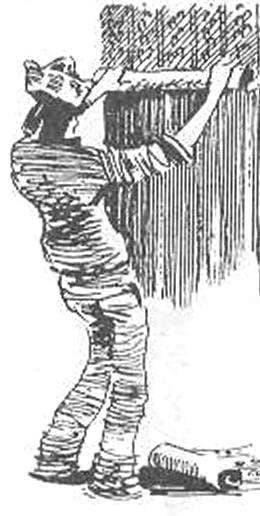When using liquids for removing Wallpaper it is necessary to adhere to the following technology:
— to prepare a solution, the concentration of which is listed on the package and depends on the type of old Wallpaper;
— drench it with a solution of Wallpaper with a sponge, brush, roller or any spray;
— wait for 10 — 20 minutes for effective impregnation of the structure of the Wallpaper; if necessary, use a spiked roller, then repeat the wetting.
— to remove old Wallpaper using further technology for removing Wallpaper.
To enhance the effect of the use of the liquid, treating the surface of a dense old Wallpaper needle roller: through the “perforations” solution will quickly moisten the structure of the Wallpaper on the depth of the layers.
Also to enhance the effect, it is possible to prepare jelly from Wallpaper paste and liquid, which after 2 — 3 h after wetting will penetrate through the layers of old Wallpaper and give the opportunity to delete layers.
Consumption rate Wallpaper:
The practice of using such fluids, suggest the following technology of their application. Old Wallpaper is wetted with a solution consisting of 14 l of very hot water, half a bottle of liquid for removing Wallpaper, 1 Cup of liquid fabric softener and two tablespoons of baking soda. The solution wall applied garden sprayer or sponge from the bottom up. The spray is produced three times, then give the solution for 15 min to saturate the Wallpapers. Then the Wallpaper is scraped, the wall also washed with a solution of one Cup of vinegar in 4.5 litres of water.
It should be noted that it is a safe material that can be used in areas subject to repair, in the presence of people.
Pasting of walls by wall-paper under painting
Despite the variety of modern finishing materials, Wallpaper remains one of the most common materials for the walls.
There is a whole group of Wallpaper, which is currently gaining popularity (especially when finishing) is embossed (structural) backgrounds without color pattern, designed for painting with the finish, which is quick and easy.
These requirements led to the widespread use of Wallpaper for painting. On the one hand, the staining can “play” with color, on the other, you can choose different textures of Wallpaper, and, finally, the technology of the walls much easier.
Wallpaper for painting are available in several types: fiberglass, paper and non-woven fundamentals, textile and jute.
Fiberglass Wallpaper (fiberglass)
They are in widespread use in Russia in the decoration of villas and cottages, and here’s why. Raw material for fiberglass is a special glass, which at the temperature of 1200°C vtyagivaetsya threads and processed in a particular tissue. Fiberglass is not гори1; this material is flammable bad depending on glues and paints. Moreover, fiberglass is resistant to micro-organisms, are neutral with respect to chemicals, they are not afraid of water and smoke. The strength of the fabric is so high that allows to close small cracks in walls, in plaster. The fiberglass adds stiffness light coating like slabs of drywall or rigid foam, sensitive to shocks and jolts. The surface after applying fiberglass is not strong and not crumble, it is possible to screw screws and hammer nails.
An important factor is the hygiene and sustainability of fiberglass. Steklorezy for the manufacture are used only natural raw materials: silica sand, soda, lime and dolomite. There is no breeding ground for micro-organisms (e.g. ticks, bedbugs), is not formed electrostatic charge.

 Apartment repair is troublesome and expensive. To such conclusion came anyone who has ever experienced this “natural disaster”. The following tips are addressed to the homeowners continue to trust only their own forces and the skills of producing renovations. To save on purchasing the cheapest materials for repair is not worth it. With the abundance which prevails on the shelves of household and home improvement stores to find a compromise solution that suits your artistic taste and financial possibilities, quite real.
Apartment repair is troublesome and expensive. To such conclusion came anyone who has ever experienced this “natural disaster”. The following tips are addressed to the homeowners continue to trust only their own forces and the skills of producing renovations. To save on purchasing the cheapest materials for repair is not worth it. With the abundance which prevails on the shelves of household and home improvement stores to find a compromise solution that suits your artistic taste and financial possibilities, quite real.
